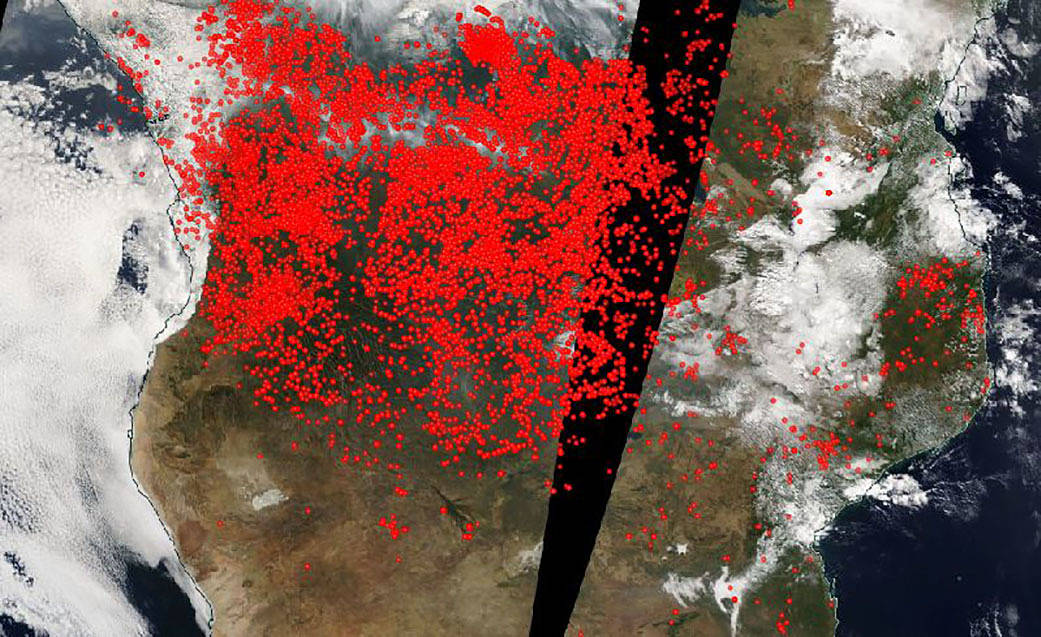In this image it’s harder to find a spot that’s not on fire, than it is to find spots denoting fires. That’s not uncommon at this time of year in Africa. Seasonally, farmers set fire to the remains of old crop fields to rid them of the leftover grasses and scrub. This action also helps return nutrients to the soil to ensure a good crop during the next planting season. This agricultural ritual is one that’s as old as time, or at least as old as 12,000 years ago. In Angola alone, the Global Forest Watch website has counted 67,162 fires for the past week. In Zambia there are 21,034, and in the Democratic Republic of the Congo there are 141,828. Over a quarter of a million fires are burning across Africa at present.
Places where traditional plots of open land are not available because the vegetation in the area is dense are the places where “slash and burn” agriculture is practiced most often. These regions include parts of Africa, northern South America, and Southeast Asia, where an abundance of grasslands and rainforests are found. While fire helps enhance crops and grasses for pasture, the fires also produce smoke that degrades air quality. The smoke released by any type of fire (forest, brush, crop, structure, tires, waste or wood burning) is a mixture of particles and chemicals produced by incomplete burning of carbon-containing materials. All smoke contains carbon monoxide, carbon dioxide and particulate matter or soot and is hazardous to breathe.
This image was captured by the Aqua satellite on June 20, 2018, using its MODIS (Moderate Resolution Imaging Spectroradiometer) instrument onboard. Actively burning areas, detected by MODIS’s thermal bands, are outlined in red. NASA image courtesy Worldview Earth Data operated by the NASA/Goddard Space Flight Center Earth Science Data and Information System (EOSDIS) project. Caption by Lynn Jenner with information from Global Forest Watch.































